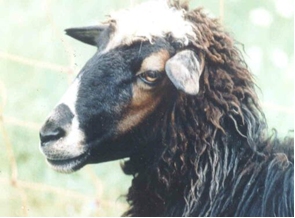Krainer Steinschaf (A)
Description
The breed is a small to medium framed and finely boned milk sheep breed with narrow head, short ears that stick out and straight profile of the nose. Most animals are polled with typical mixed wool. Forehead, belly and tail are woolly, face and legs without wool. Approx. 60% of the animals are white, 40% are brown.
General and History
Bovec is an autochthonous breed of the Julian Alpes from the border region of Carinthian, Slovenia and Friuli which descends from Zaupel. In 1988 and 1991, respectively, 30 animals were brought from Slovenia to Austria to rescue the breed. Herdbook foundation in 1992
Distribution in the past and today
Border triangle Carinthian, Slovenia and Friuli.
Keeping
The animals are kept by part-time farmers and amateurs. Some animals stay at high-altitude pastures during summer where they are milked for cheese production.
Breeding aims
Breeding aim is thus the conservation of the genetic variability of the breed and the unchanged robust form that is well suited for milking and very vital.
Performance
Withers height: 80cm (m), 75cm (w)
Body weight: 50-85kg (m), 45-70kg (w)
Fleece weight: 3-4kg (m), 2.5-3kg (w)
Lambing percentage: 150-200%
Literature
- Bietzker, U. (2001): Das Krainer Steinschaf-Zuchthistorie, Verbreitung und Zukunftsperspektiven. Diplomarbeit im Fachbereich Landwirtschaft, Internationale Agrarwirtschaft und Ökologische Umweltsicherung. Gesamthochschule Kassel
- Schlecht, A. (2004): Das Krainer Steinschaf. Der Bayerische Schafhalter 4, 12-14.









Leave a Reply
You must be logged in to post a comment.